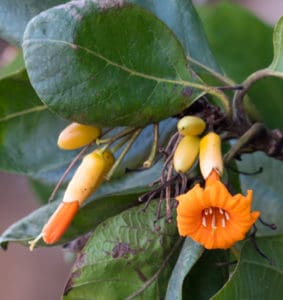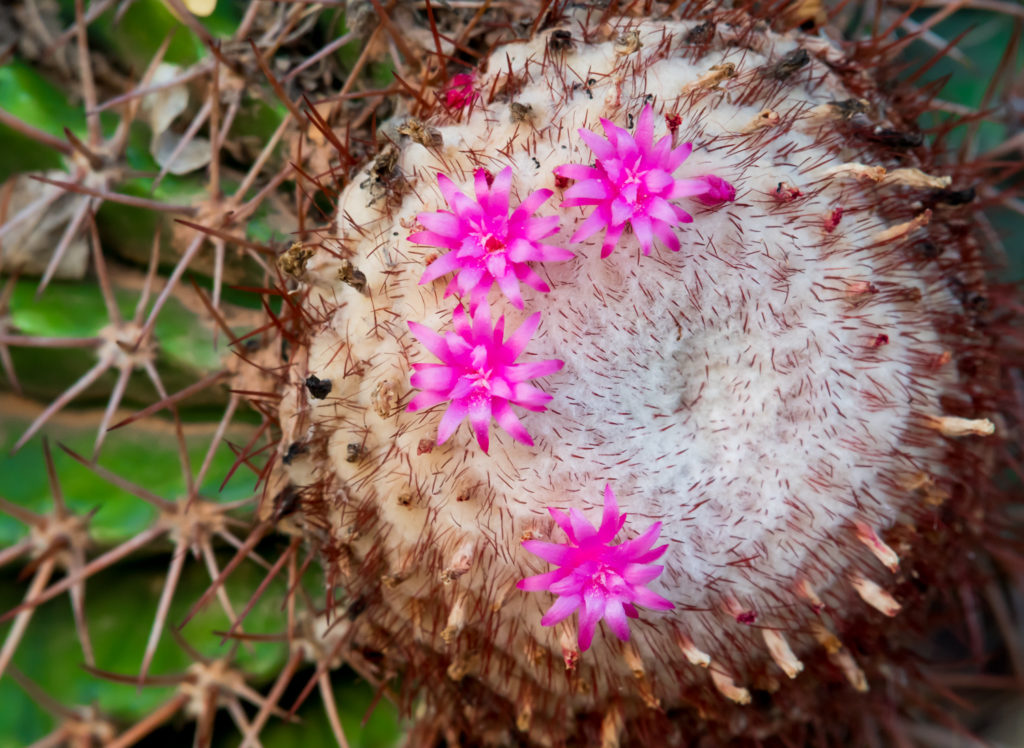
While the Virgin Islands beaches are closed, more people are getting their exercise by taking solitary or socially-distanced walks along the roads. In some areas, the native trees and plants on the roadsides can provide a welcome distraction, as they may reveal small beauties that generally go unnoticed.
In the past few years I have gotten to recognize some of the native Virgin Islands flowers, and I have been happy to see familiar friends on my current walks on St. John.
In the cool of the evening I noticed the flowers on a Black Caper tree (Quadrella cynophallophora), which is also known as Black Willow or Jamaican Caper. The ‘black’ in its name refers to the darkness of the leaves and trunk, not the color of the flowers, which are white at first, and then turn purple later in the day. I was excited to catch both colors in the same photo.

The White Cedar (Tabebuia heterophylla) has delicate trumpet-shaped flowers that range in color from pale to bright pink. The flowers are lovely, although they are often sparse and widely spread out on the tree. In this case, the name refers to the color of the wood inside, when it is cut. The larger trees were traditionally used for building boats.
The Pitch Apple tree (Clusia rosea) also has a pink flower but it is much more fleshy and robust than the White Cedar flower. The name of the tree comes from the fruit, which is about the size of an apple and has sticky seeds inside. Birds eating the fruit sometimes drop the seeds onto other types of trees, where they germinate and develop aerial roots that wrap around the host tree, like a strangler fig. The leaves are thick and fleshy also, and people used to scratch their names or messages into them, so another name for it is “Autograph Tree’.


Orange Manjack (Cordia rickseckeri) is a drought-resistant tree that only grows in Puerto Rico and the Virgin Islands. It has clusters of small, tubular orange blossoms that are attractive to hummingbirds and bananaquits. Bats eat the fruit and spread the seeds.

In dry, coastal areas, you might see tiny pink flowers growing out of the reddish, bristly crown of a Turk’s Cap cactus (Melocactus intortus). The top of this small barrel-shaped cactus looks a bit like a Moorish fez, a red felt hat that was worn during the time of the Ottoman Empire. The resulting small pink fruits are eaten by people passing by, as well as lizards and birds.
The Frangipani tree (Plumeria alba) is probably more familiar to most people. I often see them growing wild, but both the native ones and similar cultivated types are planted in yards because of their beautiful flowers. These trees are also famous for attracting large brightly-colored caterpillars, which eat all the leaves but don’t actually kill the trees. The caterpillars turn into large, gray Pseudosphinx moths.

(Source photo by Gail Karlsson)
These are only a few of the local flowers I have seen recently when I have been out walking. I do look forward to enjoying the beautiful island beaches again soon, but in the meantime at least there are a few bright spots to be found along the road.
Gail Karlsson is an environmental lawyer, writer and photographer – author of The Wild Life in an Island House, plus the guide book Learning About Trees and Plants – A Project of the Unitarian Universalist Fellowship of St. John. See uufstjohn.com/treeproject and gvkarlsson.blogspot.com. Follow her on Instagram @gailkarlsson





